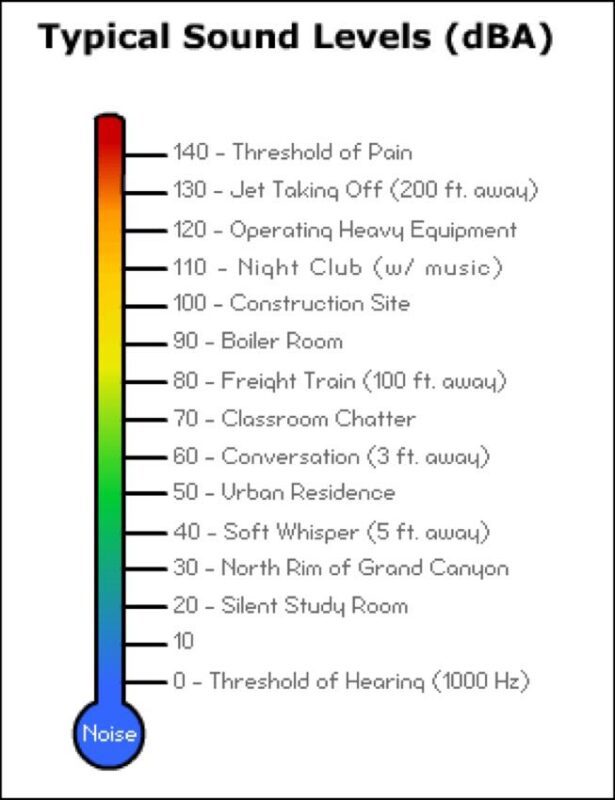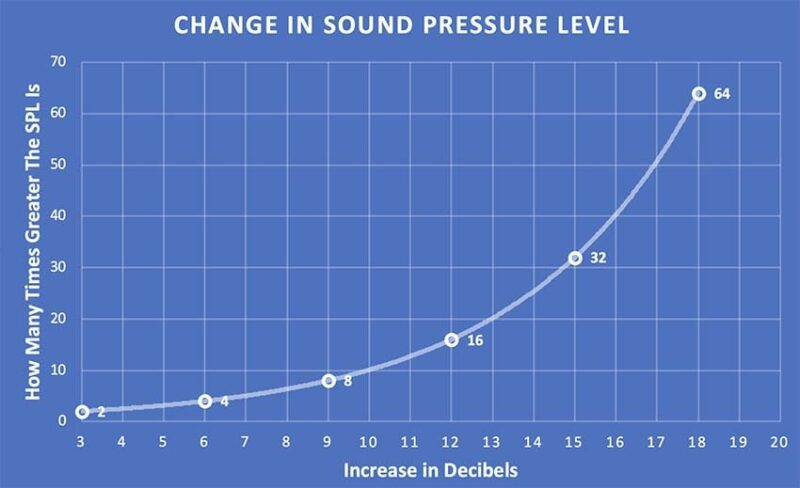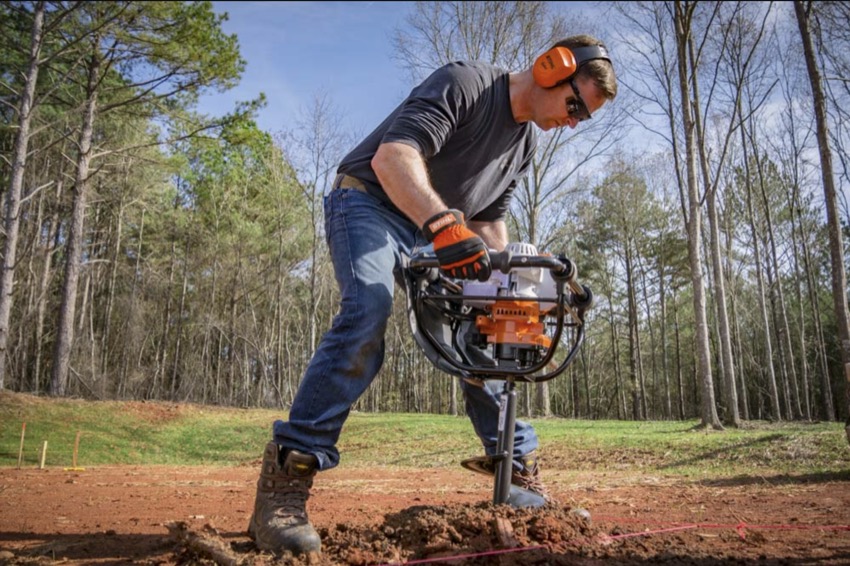We talk a lot about hearing protection on the jobsite. Any time you see a landscape crew, they have over-the-ear earmuffs or other hearing protection (like the ISOtunes Link) to guard against noise. While the gas vs battery lawn mower debate heats up and results in less noise pollution, many still have questions. In particular, we get the what is sound pressure level question almost monthly. Similarly, most don’t understand the decibel or dB scale either. Keeping all that in mind, we assembled a quick article that covers both sound pressure level (SPL) and the decibel scale (or dB scale) in depth.
What is Sound Pressure Level (SPL)?
SPL or sound pressure level—in a nutshell—is a measurement of sound pressure. While it natively uses Pascals (Pa) as a unit of measurement, we use devices that automatically convert that into the more commonly-used decibel (dB) scale.
OK, fine—but what IS sound pressure level? SPL measures the difference between the pressure from a sound wave vs the pressure of what it’s traveling through. For the most part, we’re talking about air—and we assume 0 atmospheres (even though that’s not quite accurate).
Why are we talking about sound pressure levels and decibels? Well, for one, they give us the very numerical scale we use when referring to how loud something is. Taking that data we can do some amazing things—like calculate ways to prevent hearing loss. For example, we have a lot of testing data and science that lets us know what levels of sound pressure can be sustained safely over various periods of time.
Sound Pressure Level and the Decibel Scale
We need to keep two things straight when dealing with matters pertaining to the dB scale. First, we need to understand that we can measure the actual sound pressure level. Secondly, we need to understand how SPL affects just how loud something sounds.
You can find any number of decibel-equivalent examples that help in understanding how loud real world situations are to the human ear. Below we’ve included one of our favorites. Keep in mind that as you go up the dB(A) chart, both your perception of sound as well as the actual SPL increases. Your ears can begin taking damage starting around 85 dB(A) with prolonged exposure. In case you’re wondering—your vacuum cleaner might be that loud!

How Does Sound Pressure Level Work?
Sound pressure level doubles every 3 decibels and has a magnitude of 10x every 10 decibels. That may be the most confusing thing you read in this entire article. It’s certainly the point of contention for many arguing how sound pressure level and SPL work with respect to your ears. Let’s get into some more detail.
Consider a normal conversation that measures 60 on the decibel scale (60 dBA). A slightly louder conversation might measure 63 decibels. At 63 dBA, that conversation has 2x the sound pressure level of the 60dBA SPL conversation. Let’s keep going. Another conversation at 66 decibels has 4x the SPL. A larger group of folks in a restaurant might be talking at 70 dB—that’s 10x the SPL level of that initial 60 dBA SPL conversation.

Compared to a 60 dB sound…
- 63 dB has 2X the SPL
- 66 dB has 4X the SPL
- 69 dB has 8X the SPL
- 70 dB has 10X the SPL
- 72 dB has 12X the SPL
- and so on…
But what does that 2X, 4X, 10X, etc SPL actually sound like? Now we’re talking about the perceived loudness…and that’s a whole other thing.
How Does Perceived Loudness Work?
When we think about how loud something sounds, we can still understand it using the decibel scale. To simplify, we can even make a straightforward observation based on the science of hearing. As you move up 10 decibels on the dBA SPL scale, the noise sounds twice as loud.

So, let’s go back to our initial 60 dB conversation… Another conversation measuring:
- 70 dB sounds 2 times as loud
- 80 dB sounds 4 times as loud
- 90 dB sounds 8 times as loud
- and so on…
What’s the Deal with A-Weighted vs C-Weighted dB SPL?
You may see OPE Reviews and others list 88 dB(A) SPL or 88 dBA SPL. That simply means we’re using an A-weighted SPL reading. If this were a home theater review website, we’d likely use dB(C) SPL, or C-weighted numbers. It has to do with how the sound pressure level meter records sound at various frequencies.
A Weighting – dBA SPL
By far, A-weighting is the most common type of measurement used in recording audio levels when it comes to noise. Similar to the human ear, A-weighting rounds off both lower and higher frequencies that average people simply can’t hear.
You express A-weighted sound pressure level measurements by designating dBA or dB(A) SPL.
C Weighting – dBC SPL
The reason for C-weighting is to more accurately reproduce how the human ear hears at higher output levels (like 100 dB SPL) where we tend to experience a much flatter response.
Most SPL meters include both A-weighted and C-weighted modes (as well as fast and slow response modes to get more of an average SPL vs an instantaneous reading). You typically see C-weighting used when measuring bass frequencies is a big part of the equation.
You typically see C-weighted measurements designated as dBC or dB(C).
How Sound Pressure Level and the Decibel Scale Affect Work

OSHA specifically governs just how much noise (in dBA) you can be exposed to per day. For example, you can work for 8 hours in a 90 dBA SPL environment. You can also work for just 1 hour in an environment with 105 decibels of noise.
You cannot do both. You also cannot (legally or permissibly) exceed these time thresholds (nor should you want to). You only have one set of ears!
NRR Ratings and Hearing Protection
The purpose of hearing protection isn’t just to protect our ears. It actually lets us work in these environments for longer! With hearing protection, you can work for more hours in environments where you might otherwise be constrained—and you can do so without violating those OSHA limits! When looking for hearing protection, check out the NRR rating. NRR stands for Noise Reduction Rating. That number tells you how you can calculate how many decibels are reduced by proper wearing of the device.
Unfortunately, the math isn’t as straightforward as you might think…which is min-numbingly frustrating. Rather than subtract the NRR rating from the measured environment dBA SPL, you need to do the following:
- Measure the environment using an SPL meter using the A-weighted setting, slow response
- Subtract 7 from the NRR rating to get the actual optimal noise reduction value
- Subtract that number from the measured average environment value
Example: If you working in an environment with a constant 100 decibels of noise, earmuffs with an NRR of 30 mean that your ears only get exposed to 80 decibels. Here’s the math:
- 100 dBA SPL environment noise
- NRR 30 – 7 = 23 dBA SPL reduction value
- 100-23 = 77 dBA SPL to your ears (ideally)
Final Thoughts
Unfortunately, OSHA doesn’t trust you’ll get perfect results from your hearing protection, so they recommend cutting that SPL reduction value in half. That means they only really count on 11.5 dBA SPL reduction in the example above, giving you a net effect of 88.5 dBA SPL to your ears. To us, that really just means making sure you wear your noise reduction gear properly. And you can always utilize more than one type at the same time (in-ear plugs and over-the-ear muffs, for example).
We’re also fans of active noise cancelation (ANC) earphones which do amazingly well at reducing constant exterior noise.
Hopefully, this article helped you answer the what is sound pressure level question. At the very least, we gave you something to chew on with respect to the decibel dB scale and how it might affect you on your next job.
The information contained in this article is for educational and informational purposes only and is not intended as health or medical advice. Always consult a physician or other qualified health provider regarding any questions you may have about a medical condition or health objectives.



